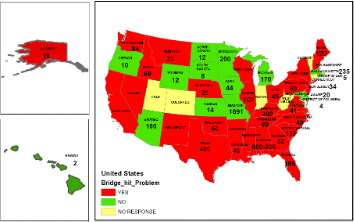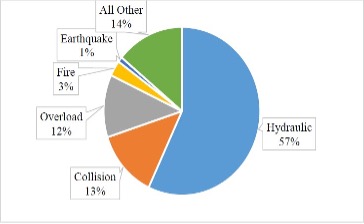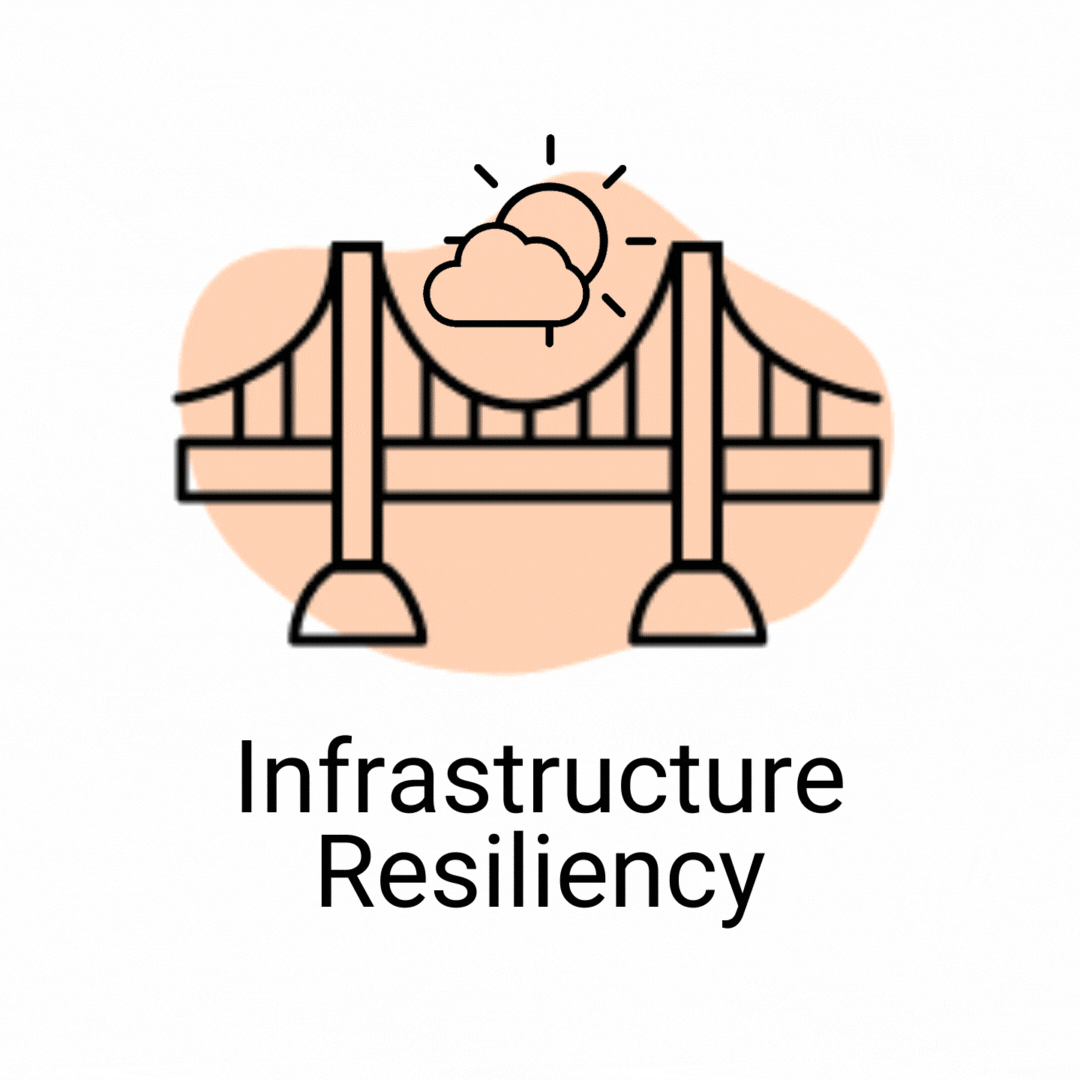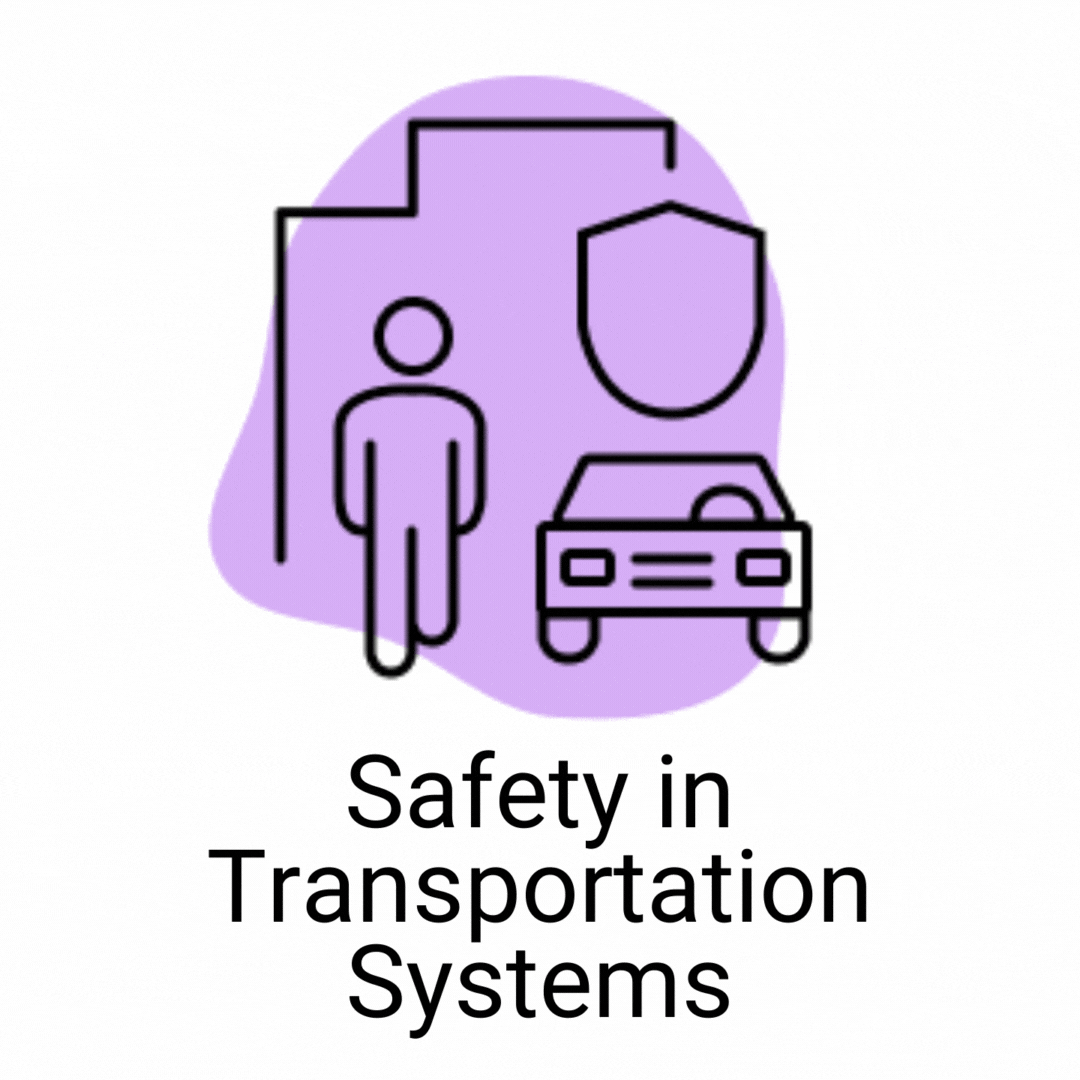Overview
Based on 2019 National Bridge Inventory (NBI) database available at the FHWA, there are a total of 617,084 bridges in the United States. Similarly, based on 2019 National Tunnel Inventory (NTI) database available at the FHWA, there are a total of 522 tunnels in the United States. It has been observed from previous research that collision, both caused by vessel and vehicles, is the second leading cause of bridge failures after hydraulic [Agrawal et al. (2018)], as illustrated in Figure 1 below. Most of the bridge and tunnel strikes, which is defined as an impact on bridges or tunnels by overheight vehicles, have been observed to cause damages to bridge superstructure or tunnels and traffic congestions, and may sometimes cause significant enough damage to warrant the replacement of a bridge. Although bridge/tunnel strikes have been a common occurrence, few studies have focused on systematic investigation on causes of occurrence and mitigation approaches. Bridges in New York State have been experiencing close to 200 documented strikes a year with many strikes going unnoticed or noticed during biennial bridge inspections. Primary causes of these overheight impacts include the use of consumer GPS by commercial truck drivers and other haulers, improperly stored equipment on trucks, violation of vehicle posting signs, illegal commercial vehicles on parkways, etc. One of the challenges associated with roadside technologies is the high installation costs in the range of $150,000 per location for some states like New York. In some installations, highway improvements may be required for a truck to safely merge back into traffic, without causing considerable traffic interruptions, in divided lane highways, making overall cost as much as $500,000. This research targets a very low-cost Artificial intelligence (AI) based overheight vehicle warning system for bridges based on the use of cutting-edge camera technology, augmented reality and AI based height detection approach. The proposed system could be installed on a bridge in the direction facing the traffic and could detect an incoming overheight truck from the safe stopping distance using the combination of image processing, augmented reality, and AI. Successful completion of the research would lead to the commercial development of a system that could be installed cost-effectively to prevent impacts to bridges by trucks nationwide. |
Research Objectives
The main objective and the scope of the proposed effort will be to develop a cost-effective early warning overheight vehicle detection system using the recent development in long-range cameras, augmented reality and artificial intelligence-based vehicle shape and height detection. This will be achieved by identifying or customizing a long-range camera technology that can meet harsh field conditions, e.g., clear image up to safe stopping distance during day and night conditions, and during snow and rain; developing an augmented reality and AI based image detection tool that can identify the shape and height of the truck among the vehicles in the high-speed traffic flow and carrying out a proof-of-the concept testing in a simulated environment in the lab.
Related Media





